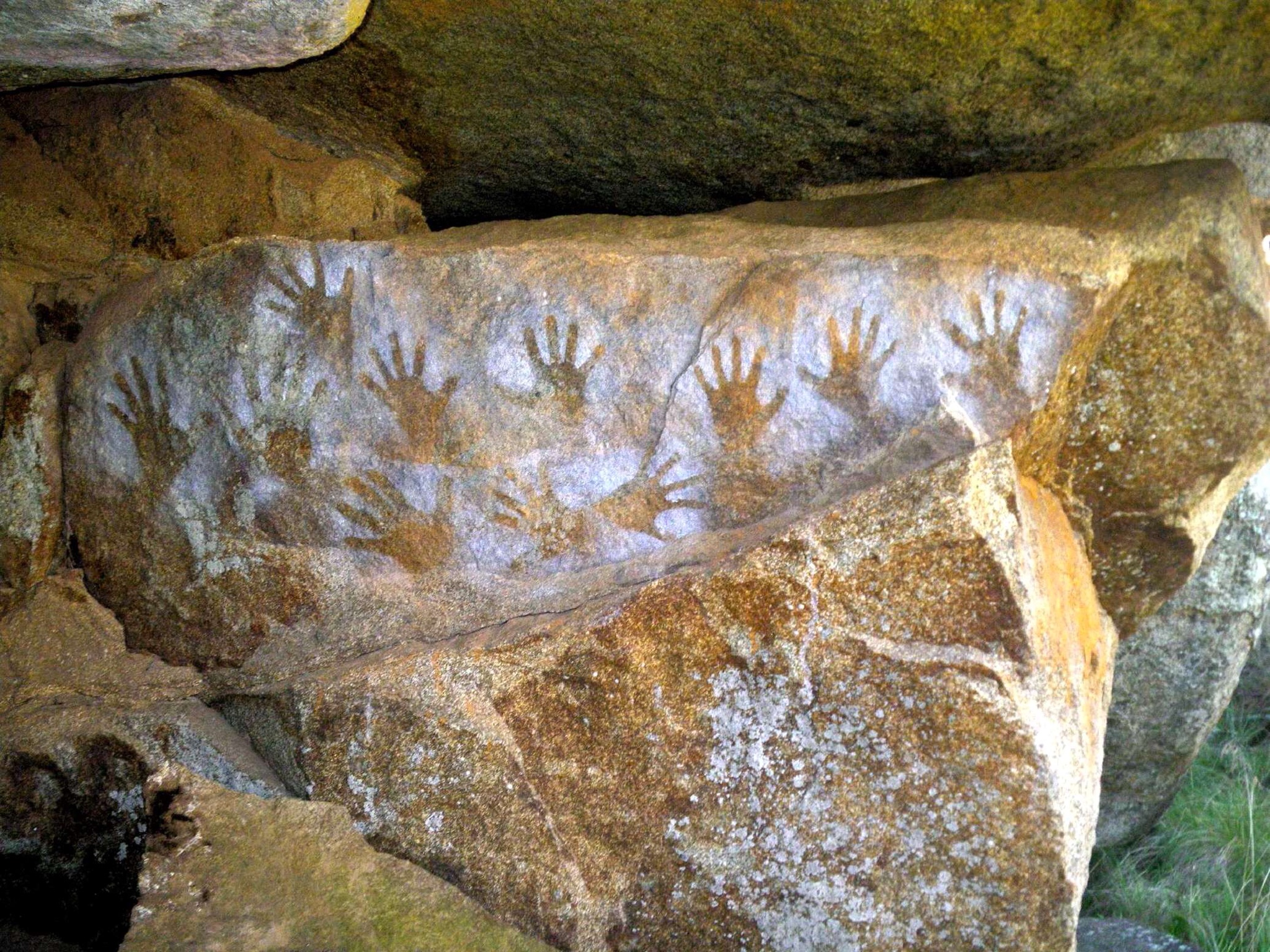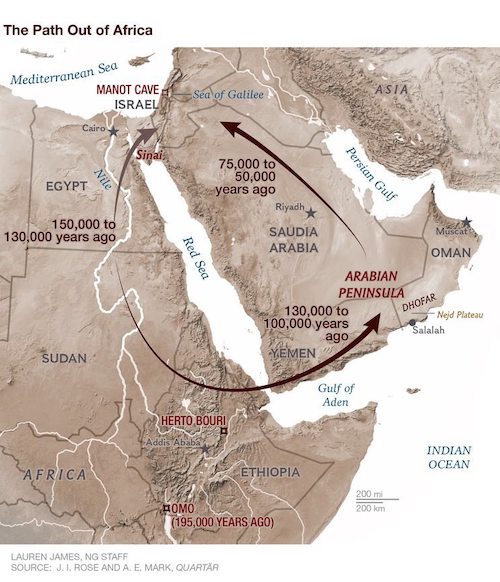
While hunting for fossils in Ethiopia’s Afar Triangle on November 24, 1974, paleoanthropologist Donald Johanson and graduate student Tom Gray stumbled upon the partial remains of a previously unknown species of ape-like hominid. Nicknamed “Lucy,” the mysterious skeleton was eventually classified as a 3.2 million-year-old “Australopithecus afarensis”, one of humankind’s earliest ancestors. Homo sapiens or modern humans evolved in Africa about 200,000 years ago, reaching modernity about 50,000 years ago. Prior to the arrival of humans in Europe, the Middle East and Asia, these places were inhabited by another species of hominoid, Homo heidelbergensis or Neanderthals. Neanderthals begin to show on the archaeological record at around 400,000 years ago and became extinct at about 35,000 years ago with the arrival of humans. About 180,000 years ago humans (Homo sapiens) successfully migrated out of Africa. By about 80,000 to 50,000 years ago they were already beginning to diverge into distinct populations. This post will focus on migration to Australia by Homo sapiens, an area untouched by Homo erectus or Neanderthals. Recent findings indicate that Indigenous Australians are probably descendants of the first modern humans to migrate out of Africa. They migrated from Africa to Asia around 80,000 years ago along the coast and arrived in Australia around 50,000 to 70,000 years ago.
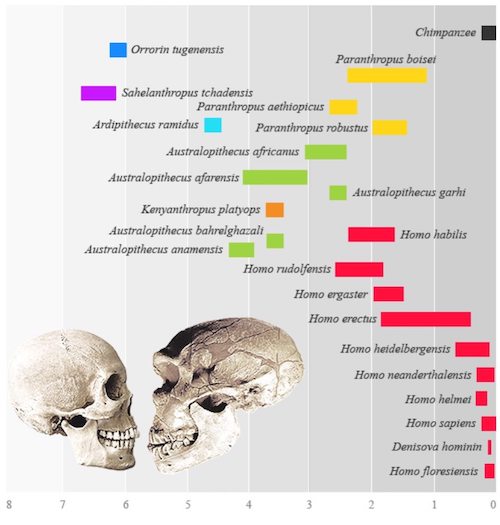
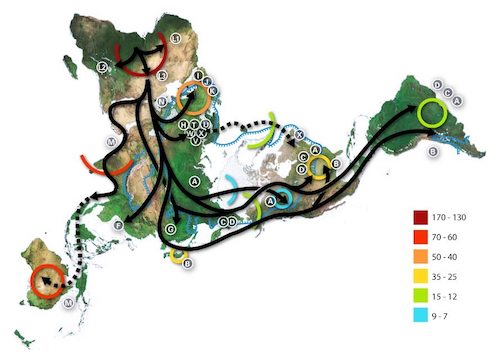
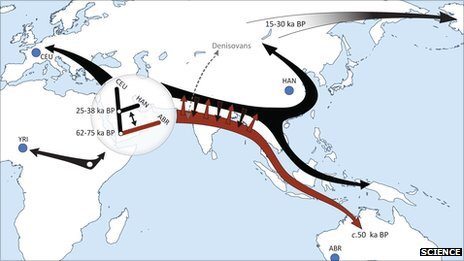
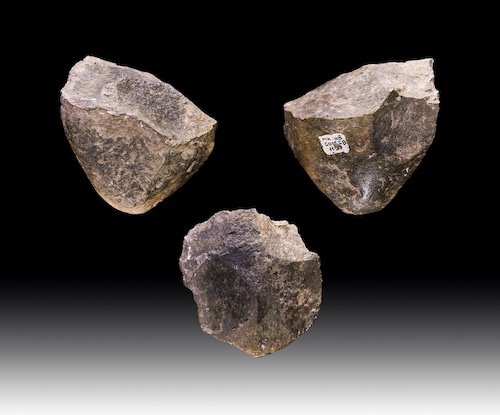
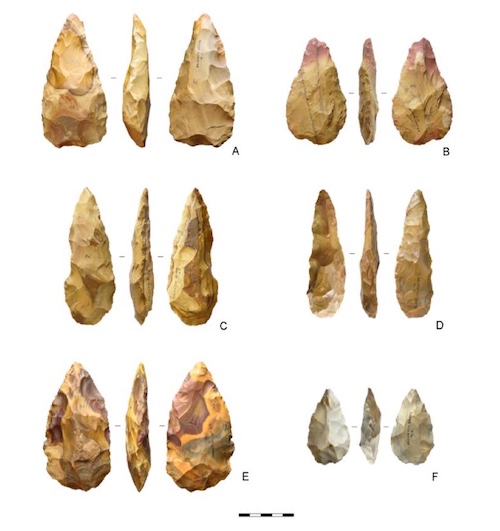
These time periods are extremely long and the reader might rightly wonder how we know these ” facts”. Thousands of scientists use human remains, artifacts mostly including tools, ceramics and art and lately a new technique, DNA modeling. The earliest documented members of the genus Homo are Homo habilis, which evolved around 2.3 million years ago; the earliest species for which there is positive evidence of use of stone tools. It is believed that these species were the first to use fire and complex tools. Homo erectus and Homo ergaster were the first of the hominina to leave Africa, and these species spread through Africa, Asia, and Europe between 1.3 to 1.8 million years ago. The Oldowan, sometimes spelled Olduwan, is the archaeological term used to refer to the earliest stone tool industry in prehistory. Oldowan tools were used during the Lower Paleolithic period, 2.6 million years ago up until 1.7 million years ago, by ancient hominins. An Oldowan tool is basically a rock broken in half to expose sharp edges. This technological industry was followed by the much more sophisticated Acheulean industry. The earliest known Oldowan tools yet found date from 2.6 million years ago, during the Lower Palaeolithic period, and have been uncovered at Gona in Ethiopia. After this date, the Oldowan Industry subsequently spread throughout much of Africa, although archaeologists are currently unsure which Hominan species first developed them, with some speculating that it was Australopithecus garhi, and others believing that it was in fact Homo habilis. Homo habilis was the hominin who used the tools for most of the Oldowan in Africa, but at about 1.9-1.8 million years ago Homo erectus inherited them. The industry flourished in southern and eastern Africa between 2.6 and 1.7 million years ago, but was also spread out of Africa and into Eurasia by travelling bands of H. erectus, who took it as far east as Java by 1.8 million years ago and Northern China by 1.6 million years ago.
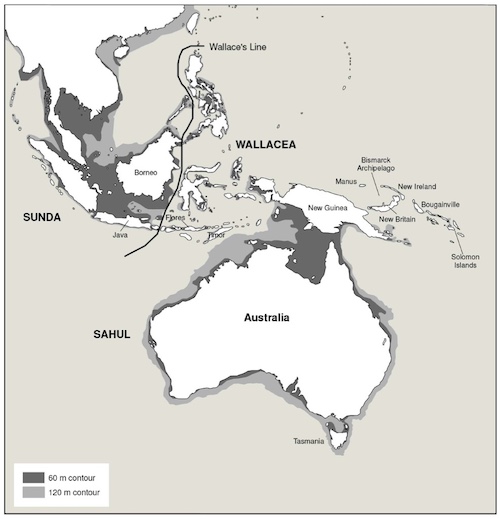
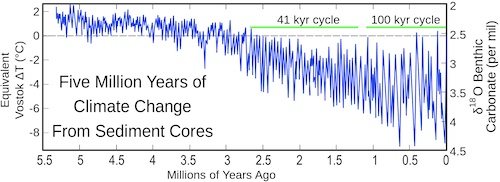
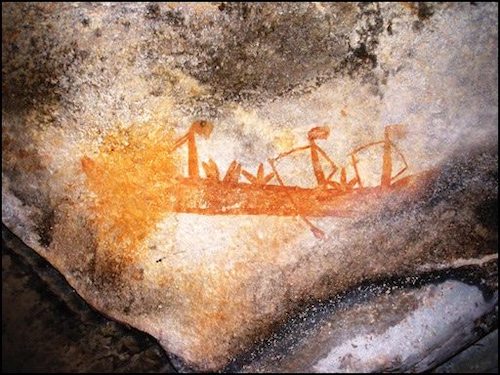
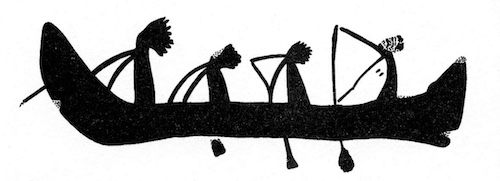
From the Near East, these populations spread east to South Asia by 70,000 years ago, and on to Australia by at least 70,000 years ago according to Professor Stephen Oppenheimer, Homo sapiens for the first time colonizing territory never reached by Homo erectus. Europe was reached by Cro-Magnon some 40,000 years ago. East Asia (Korea, Japan) was reached by 30,000 years ago. It is disputed whether subsequent migration to North America took place around 30,000 years ago, or only considerably later, around 14,000 years ago. Aboriginal Australians, Papua New Guinea highlanders and the Mamanwa people from the Philippines are genetically closest to each other and diverged about 36,000 years ago. This makes sense since Papua New Guinea was connected to Australia when it was first colonized and the Kimberley (in northwest Australia) was separated from Southeast Asia (Wallacea) by a strait approximately 90 km wide. This fit well with earlier genetic studies. But the team was surprised to find, using four separate statistical methods, that a much more recent genetic mixing with people from India had occurred. They estimated that about 11% of the DNA of aboriginal Australians is derived from this event. All of this must have involved boats of some sort. In the Bradshaw cave paintings dating from at least 20,000 to 30,000 years BCE we see an actual depiction of a boat. The dating of ochre paintings is problematic with C14 so these paintings could be considerably older. The depictions of boats in Bradshaw rock art suggest that there were large, ocean vessels going to Australia and constructed of bundles of reeds in this time period.
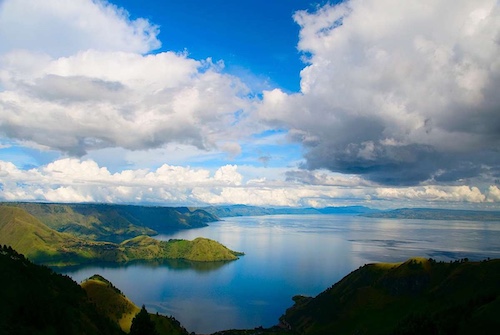
Lake Toba (Indonesian: Danau Toba) is a lake and supervolcano. The lake is 100 kilometers long, 30 kilometers wide, and up to 505 meters (1,666 ft) deep. Located in the middle of the northern part of the Indonesian island of Sumatra with a surface elevation of about 900 meters, the largest volcanic lake in the world. The Toba eruption or Toba event occurred at the present location of Lake Toba about 73000±4000 years Before Present (BP) about the time that humans crossed to Australia. In India, the ash covered the sub-continent, where it was at least three meters thick. Dating studies of human stone tools found above and below the ash layer have shown that the layer immediately below the ash has an age of 74,000 years, as expected, but the tools resting just above the ash were only 55,000 years old. The Toba eruption apparently coincided with the onset of the last glacial period. Could it be that immediately after the blast, temperatures plunged enough to create a temporary ice bridge to Australia and then melted leaving them stranded? The event has been theorized to block sunlight for up to five years. Or did these very ancient ancestors simply build boats to cross from Indonesia or as some have suggested, sailed directly from Africa based on evidence of genetically similar Boabab trees in Africa and Australia?
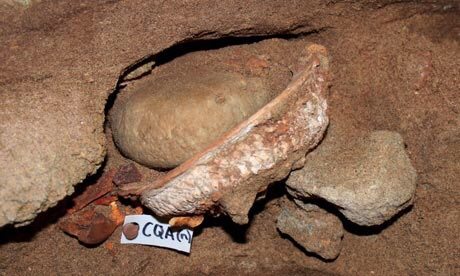
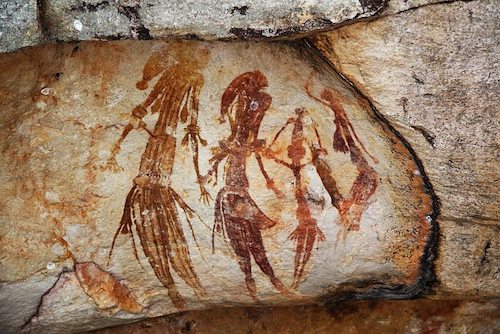
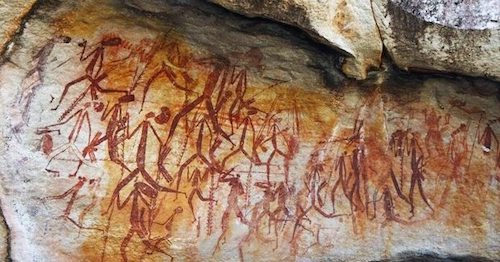
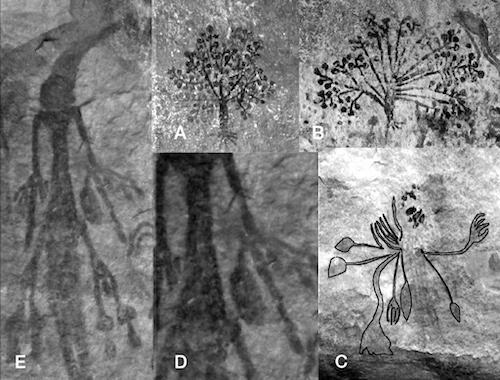
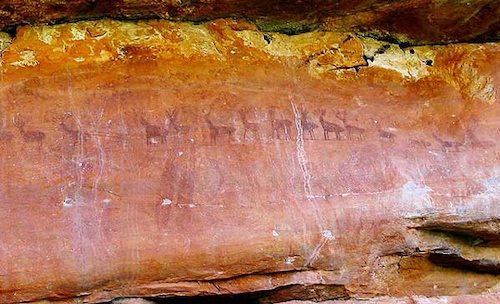
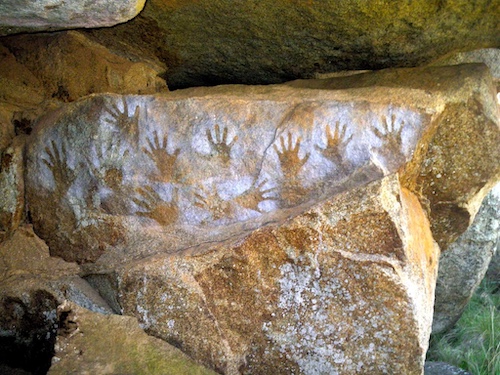
The use of ochre, a clay pigment, has been used at least as far back as 100,000 years BP in the South African Blombos cave. Colors include red, pink, yellow, white, and blue, which is rare and is found in caves and along the coast. Australia’s Aboriginal culture probably represents the oldest surviving culture in the world, with the use of stone tool technology and painting with red ochre pigment dating back over 60,000 years. Ochre is plentiful across most of Australia and it occurs in many of the older archaeological sites; it was an item of trade. Australians never developed an “iron age”, “bronze age”, or pottery, and the terms “palaeolithic” (old stone age) and “neolithic” (new stone age) are not used in Australia, because stone technology did not progress in the same way as the rest of the world. The remote coastline of northwestern Australia (Kimberley) was probably the first landing site on this continent, as groups of our early ancestors crossed by boat from Timor up to 60,000 years ago. Upon reaching the Kimberley region; at some point, they began to decorate the red sandstone rocks with exquisite and detailed rock art, now referred to as the Bradshaw paintings, or Gwion Gwion. Wandjina paintings, a rock art of a very different style, are also endemic to this area of Australia. The number of rock art sites in the Kimberley region, both for the Bradshaw paintings and the wandjina paintings have been estimated to be over 100,000 in number, but only a fraction of these have been recorded. The appearance of humans is very stylized and the pictures of deer must have been painted by someone who had crossed over to Indonesia since Australia has never had deer, suggesting some trade over the sea.
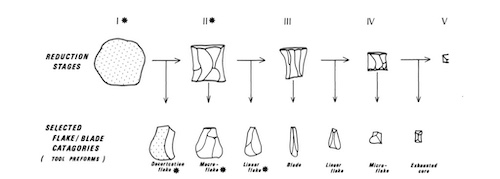
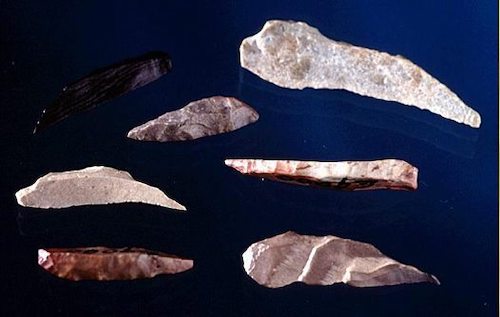
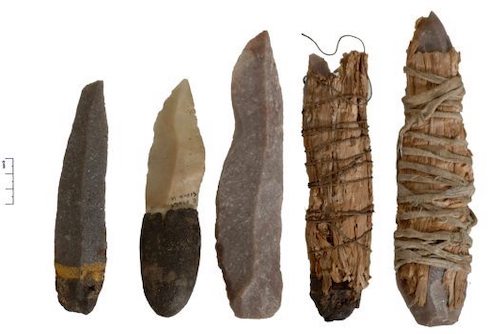
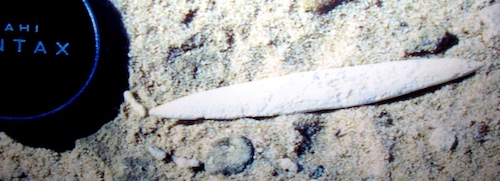
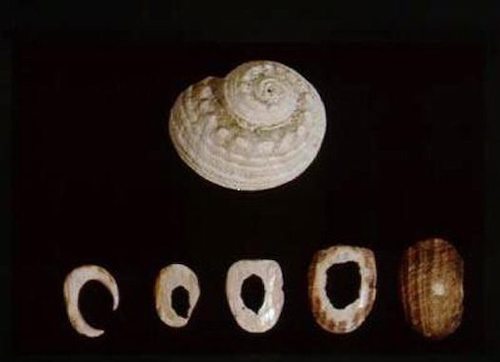
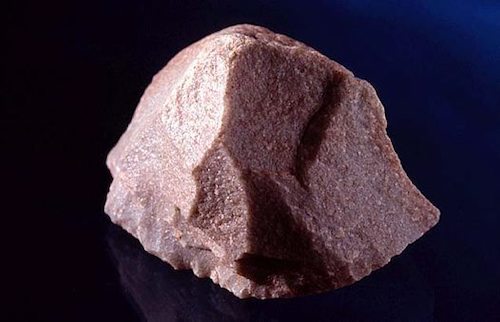
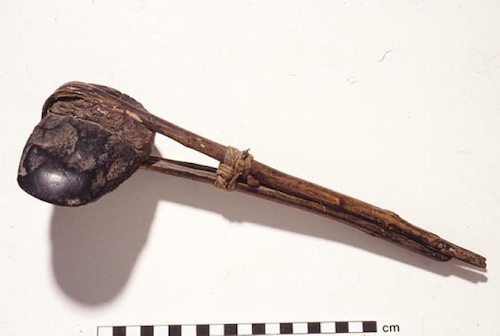
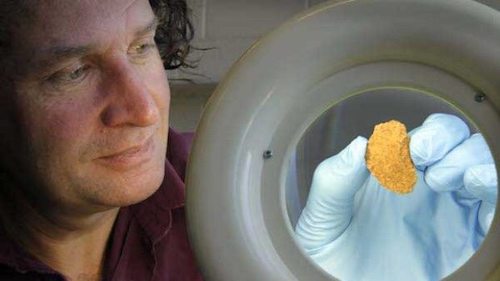
Humankind’s most ancient stone tool technology, the percussion method of chipping away at the edge of a rock to make a sharp edge for cutting, dates back 2.5 million years, and was still practiced by Aboriginal Australians until the 1960s and later. Many stone choppers and flake scrapers commonly made until the last few decades are similar to these earliest tools. These flaked tools were/are used to shape wooden weapons and implements. Bondi points are a type of backed artifact named after Bondi Beach in Sydney where they were first identified. Backed artifacts are stone implements that have had small flakes removed along one side to create a distinct, steep, blunt edge. The side is thought to have been blunted so that the implement could be gripped in the hand, attached to a spear shaft or to a gum handle. Bondi points are thought to have been used as spear points, cutting implements, opening mollusks and for piercing materials such as animal skins. Surprisely stone points were not used on spears until about 5,000 BP. Below that are five long stone blades with sharp edges, known by archaeologists as Leilira blades. The color of the blades ranges from cream to dark grey. They are between 15.2 cm and 20 cm in length, mostly used as knives. Cores are pieces of stone from which flakes have been removed. Horsehoof cores, such as this one, were used as tools for woodworking activities such as scraping. Axes, those essential tools of war and peace, came slowly to Australia. The manufacture and use of ground edge axes, still occasionally made today, date back over 35,000 years on the northern mainland. On present evidence, it appears that the manufacture of ground edge axes spread slowly south, dating back only 4,500 years in southern Australia, and not being used in Tasmania, which was cut off from the mainland by rising seas about 11,000 years ago. The discovery is significant as it predates by at least 5,000 years the oldest known examples of other ground-edge implements from Japan and Australia, which have been dated at 22,000 to 30,000 years old. By comparison, the earliest ground-edge axes from Europe, West Asia, and Africa are about 8,500 years old.
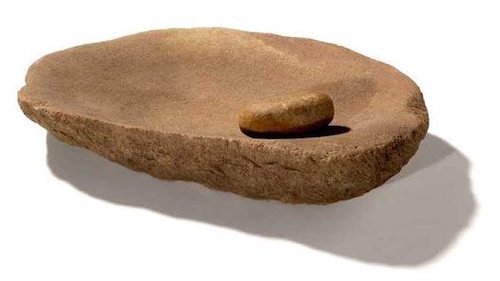
This post began with the simple question of why the Neolithic Revolution never reached Australia despite contacts with Indonesia and India. Perhaps the better question would have been the definition of Neolithic which has undergone significant changes lately. Australia has been generally regarded as populated by hunter-gatherers ever since Captain Cook in 1770 described its people as having ‘…no fixed habitation but move about from place to place … in search of food … [and] … we never saw one inch of cultivated land in the whole country’. Yam Daisy (Murnong) was the staple food for aboriginal people in many regions, with dense concentrations of plants over large areas being recorded by some early reporters; one statement, for instance, describes plants by ‘the millions’ (Gott 1982, 1983). The introduction of cattle, sheep and goats by immigrating early colonialist Europeans led to the near extinction of Murnong, with calamitous results for first Indigenous Australians’ communities who depended upon Murnong for a large part of their food. It seems obvious that the alluvial flat environments in which these yams were primarily grown by Aboriginal people were very different from those of their natural habitat of open woodland and their growing period was the reverse of that of tropical yams of the same species. That these differences were entirely the result of chance seems remote: a process of ‘domestication’ (following Rindos 1989) is likely to be at work. Agriculture and farming, from an Aboriginal world view, includes hunting and all forms of food collecting. Also included is intensive farming such as eel trapping, fish traps and yam growing. By eating a large variety of foods in a systematic and sustainable manner, Aboriginal food gathering techniques could ensure that no one food source would be over-exploited. Plant foods eaten include wild fruit, nuts, berries, edible leaves and plant roots. Thus the Neolithic in Australia is very much different from the Levant, no grain production or animal husbandry, but nonetheless is similar with respect to cultivation of crops. Take away the patina of a few thousand years of European history and the Aboriginal people of Australia are a testament to the resiliance and innovation of the human mind, creating the revolutionary boomerang and another approach to the neolithic revolution.
References:
Lucy: http://www.history.com/news/famed-lucy-fossils-discovered-in-ethiopia-40-years-ago
Primate Migration: http://www.uiowa.edu/~bioanth/courses/Primate_Evolution.pdf
Stone Age Toolkit: http://www.pbs.org/wgbh/nova/stoneage/tool-nf.html
Australian DNA: http://articles.latimes.com/2013/jan/14/science/la-sci-india-australia-migration-20130115
Wikipedia Stone Age: http://en.m.wikipedia.org/wiki/Stone_Age
Australian Human Migration: http://www.bbc.co.uk/news/science-environment-15020799
Migration Heritage: http://www.migrationheritage.nsw.gov.au/objects-through-time/essays/50000-years-before-present/
Africa to Australia: http://www.uq.edu.au/nuq/jack/CEO%20Circularity.pdf
Lake Toba: http://www.globeimages.net/img-lake-toba-palembang-indonesia-11523.htm
Australian Stone Age: http://www.aboriginalculture.com.au/introduction.shtml
Oldest Ocher Kit: http://www.theguardian.com/science/2011/oct/13/stone-age-painting-kits
Cave Painting: http://www.donsmaps.com/aboriginals.html
Bradshaw Foundation: http://www.bradshawfoundation.com/bradshaws/introduction.php
Australian Flaked Tools: http://australianmuseum.net.au/uploads/journals/16839/342_complete.pdf
Australian Aboriginal Acheulean Tools: http://www.lithics.org/lithics/Lithics/Lithics%2032/Lithics_32_2011_Brumm_and_Rainey.pdf/
35,000 Year Old Ground Axe Head: http://www.smh.com.au/national/35000yearold-axe-head-places-aboriginal-ancestors-at-the-cutting-edge-of-technology-20101105-17hil.html
Neolithic Australia: http://www.academia.edu/4642803/Revisiting_the_Neolithic_Problem_in_Australia

